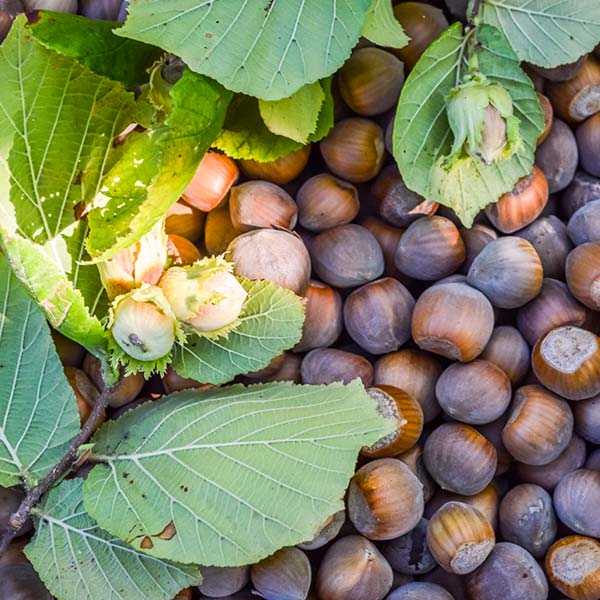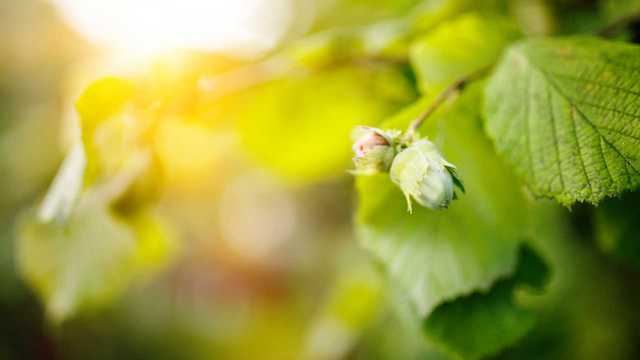The Hybrid Hazelnut Consortium was formed in 2009 to create a leading research and breeding program for the development of hazelnuts. The group’s ultimate goal is to develop a widely adapted, high-yielding, and low-input sustainable crop that is competitive with annual crops for food, feed, or bioenergy.
The Consortium is comprised of five organizations dedicated to this goal. These entities leverage intellectual resources and prior research to address the major barriers currently restricting the widespread expansion and agricultural adoption of hazelnut production.
The two primary challenges are:
 Susceptibility to Eastern Filbert Blight (EFB).
Susceptibility to Eastern Filbert Blight (EFB).
EFB is a fungal disease predominant with European hazelnuts that severely limits their potential as a commercial crop. The Consortium is continually researching EFB and working to develop a hazelnut cultivar with long-term resistance to the disease.
 Limited climatic adaptation of existing cultivars.
Limited climatic adaptation of existing cultivars.
Through hybridization, the Consortium is working to create new cultivars with an enhanced ability to adapt to various climates, thereby increasing the potential for commercial growth.
In its first three years, the Consortium developed two leading plants that showed signs of improvement. Then in 2016, the group secured a five-year grant totaling $3.1 million from the USDA to continue its work. The Consortium’s efforts paid off, and in 2017, the group began planning the public release of its first two plants.

What is a Hybrid Hazelnut?
There are different types of hazelnuts throughout the world. The three varieties that the Consortium works with include a European variety bred for large nut size and the two native North American species (beaked and American) which, among other potential benefits, offer winter hardiness and disease resistance. The goal is to combine the best traits of these plants to create a commercial hybrid hazelnut.
See the strengths — and weaknesses — of different hazelnut varieties.Get the Latest News and Info Right in Your Inbox
By subscribing, you will receive stories illustrating the power of trees, the latest news and updates, and how we can make a positive impact together.

